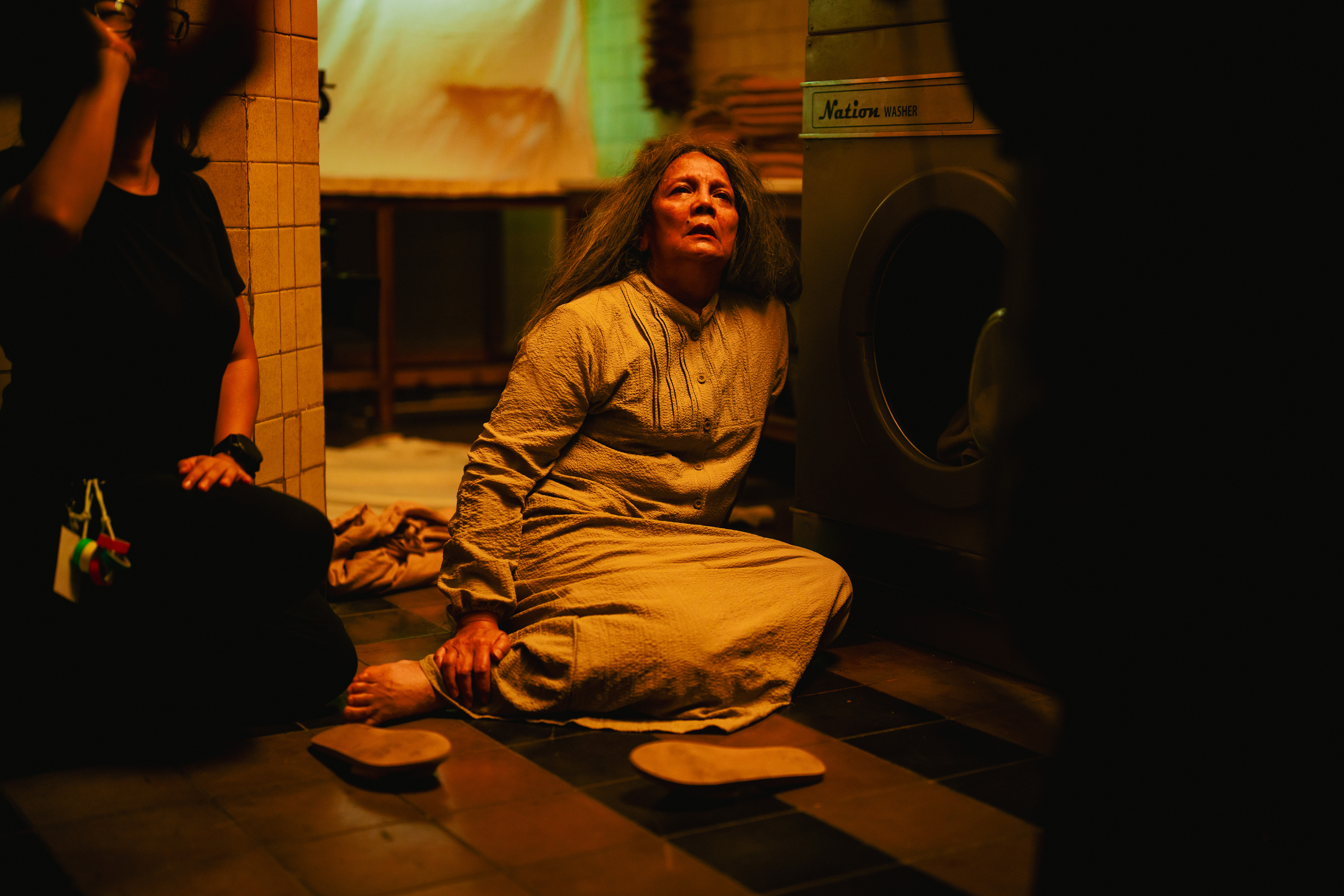The tagline for Indonesian director Joko Anwar’s new horror film “Siksa Kubur” (Grave Torture) has a simple message: “You will believe.”
The film, which was released on April 11 and has since sold some 4 million tickets, tells the story of siblings Sita and Adil, who witness their parents die when a suicide bomber detonates a bomb outside the family’s bakery in 1997.
The suicide bomber believes that he will die as a martyr and thus escape being tortured in his grave after he dies – a unique belief in Islam that the deceased will be questioned by two angels upon their death and tortured in their graves if they are found to have sinned.
When Sita (Faradina Mufti) becomes an adult, she becomes obsessed with proving that grave torture does not exist, and sets out to find the most evil person possible to test the theory. Her plan is to be buried alive with them after they die, and shoot a video from inside the grave that unequivocally disproves the concept – aided by Adil (Reza Rahadian) who has grown up to become a mortician and grave digger.
It is a terrifying story that plays with audiences’ fears about life after death, and has been another hit for an Indonesian film scene that has been steeped in horror movies dating back to the 1960s. This trend peaked in the 1970s and 1980s with the work of stars like Suzzanna Martha Frederika van Osch, who was known as the “Queen of Indonesian Horror.”

The success of Siksa Kubur, and the uniquely Muslim angle of the horror story, also offers a window into what local audiences find horrifying and why – and what exactly people are willing to believe.
In an interview with The Diplomat, Anwar said that the majority of Indonesian horror characters “come from the realm of death.”
“It could be someone that came back from the dead in the form of a spirit, or creatures which have transformed from dead people like Kuntilanak [a pregnant ghost who died in childbirth], Pocong [a ghost wrapped in a funeral shroud], Wewe Gombel [a vengeful female ghost], or Sundel Bolong [a beautiful mythical ghost],” he said.
He added that Tuyuls (undead infants) also came from unborn fetuses, but that other kinds of ghouls can fail to resonate with local audiences.
“Monsters don’t usually work in Indonesian horror, nor aliens,” he said. “This came from the fact that most Indonesians are taught religious teachings from an early age and the afterlife is the main ingredient.”
Whatever ingredients Indonesian horror directors are using at the moment appear to be working, as the genre is enjoying increased commercial success.
Two of the highest-grossing films of 2024 include “Siksa Kubur,” which has sold some 4 million tickets, and the horror-comedy “Agak Laen,” which has sold over 9 million tickets since its release in February.
Sunil Samtani, an executive producer of “Siksa Kubur” and one of the directors of the production company Rapi films, said that horror “has been coming up a lot in the Indonesian market lately.”
Much of this success, he said, can be attributed to the deep continued cultural appeal of horror in Indonesia.
“There are so many beliefs in ghosts, spirits, and black magic. There is always a spirit somewhere in Indonesia. Indonesians feel it is part of them. There could be this ghost in your house or, if you hear a noise, that could be a ghost too,” he said.
“When you explore that in a movie, people want to see it.”
Yet while Indonesian horror films have proven to be box office smashes lately, translating that appeal to international markets is not straightforward.
While “Siksa Kubur” has been highly successful, and has been released in neighboring Singapore and Malaysia (with releases in Vietnam and Cambodia in the works), the specificity of Indonesian horror could be a barrier to its entry into the wider international film circuit.
Thomas Barker, an honorary associate professor at the Humanities Research Centre of the Australian National University, who specializes in the cultural sociology of the Southeast Asian screen industries, told The Diplomat that horror in general has its challenges.
“Horror is a much-maligned genre in filmmaking history, despite it being actually very important to the development of cinema, to adoption of techniques and technologies, and to the careers of filmmakers,” he said.
He added, however that horror is often seen as cheap and simplistic, and is most often associated with teenage audiences and thus not considered “high art.”
“Horror is both easy and difficult to export,” Barker said.
“It’s easy because its main effect of shock and fear can be transferred to audiences of whatever type, but it’s also not easy to make a film at the forefront of the genre that is going to shock and surprise audiences,” he added.

Christine Hakim, one of Indonesia’s most famous stars, shoots a scene from “Siksa Kubur.” (Courtesy Joko Anwar)
“It’s only recently in Indonesia that we see a generation of filmmakers who are operating with a detailed knowledge of global horror and its developments, who themselves make unique films, and who have a network of funders and distributors willing to take their work outside Indonesia.”
When it comes to exporting horror films, Anwar has been one of Indonesia’s most successful directors.
His 2009 psychological thriller “Pintu Terlarang” (The Forbidden Door) was shown at film festivals in London, Rotterdam, and Bucheon, while his 2017 film “Pengabdi Setan” (Satan’s Slaves) – a loose remake of the 1980 film of the same name – was the highest-grossing Indonesian film ever to be released in Malaysia.
In 2020, Anwar’s folk-horror film “Perempuan Tanah Jahanam,” which was released internationally under the title “Impetigore,” premiered at the Sundance Film Festival and was Indonesia’s official submission for the 2021 Academy Awards.
Regionally, Indonesian horror films tend to find the most success in neighboring Malaysia and Singapore due to cultural similarities, but some have gone global through different methods of distribution.
South Korea’s CJ Entertainment has co-invested and produced a number of horror films, including Anwar’s “Pengabdi Setan,” while the streaming services Shudder, which specializes in horror cinema, has acquired the rights to “Pintu Terlarang,” “Pengabdi Setan,” and “Impetigore.”
“If you can get the elements right,” Barker said, “You can export and get big audiences overseas, even in the U.S. market. Think of the Japanese horror films from the late 1990s and early 2000s such as ‘The Ring,’ ‘Ju-On,’ and ‘Dark Water.’”
Producer Samtani said that the reverse is also true, and that foreign horror films have also been big hits in Indonesia, including Korean horror films and American movies like “The Nun,” “The Conjuring,” and “Insidious.”
Despite the hurdles of translating Indonesian horror to other audiences, Samtani said that he is “very optimistic” about the future.
“I believe that, as long as you can create fear, it can translate to every country in the world, and I believe Joko’s films translate well because he is an amazing storyteller,” he said.
This storytelling element is paramount and necessitates keen character development in addition to the usual jump scares and gore that many horror audiences expect, he added.
“If audiences have a vested interest in the characters, they are hooked,” he said. “But, if you don’t care about the characters, it doesn’t matter to you if they live or die.”

































